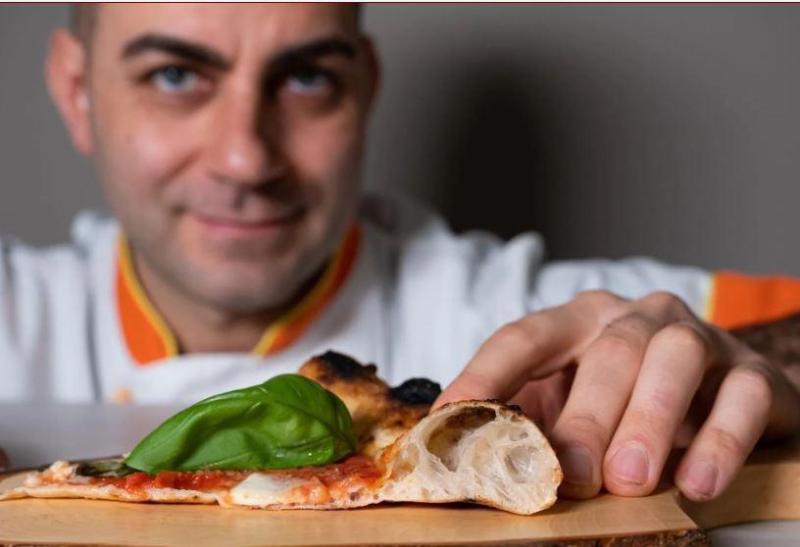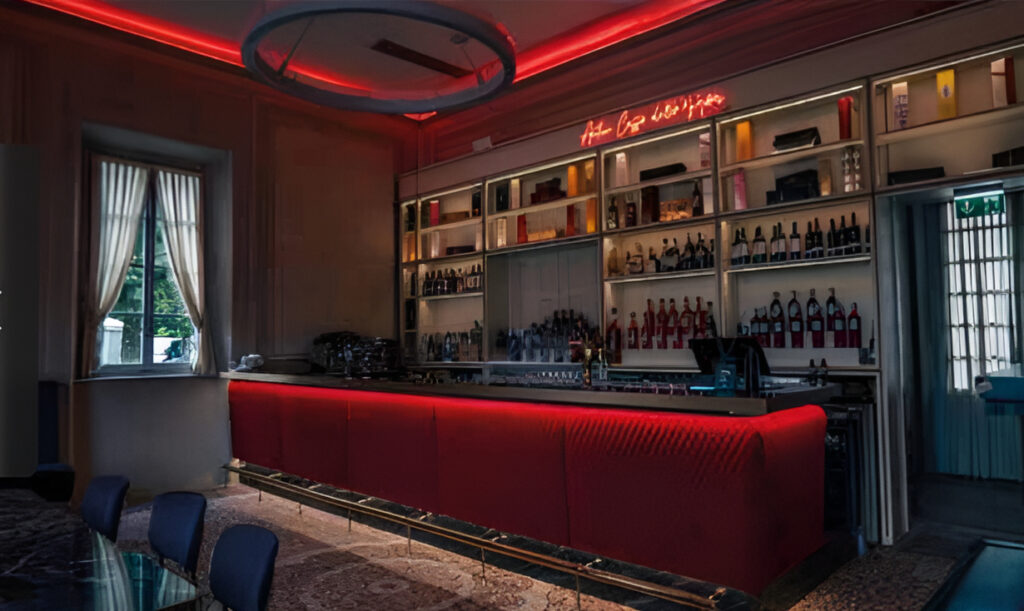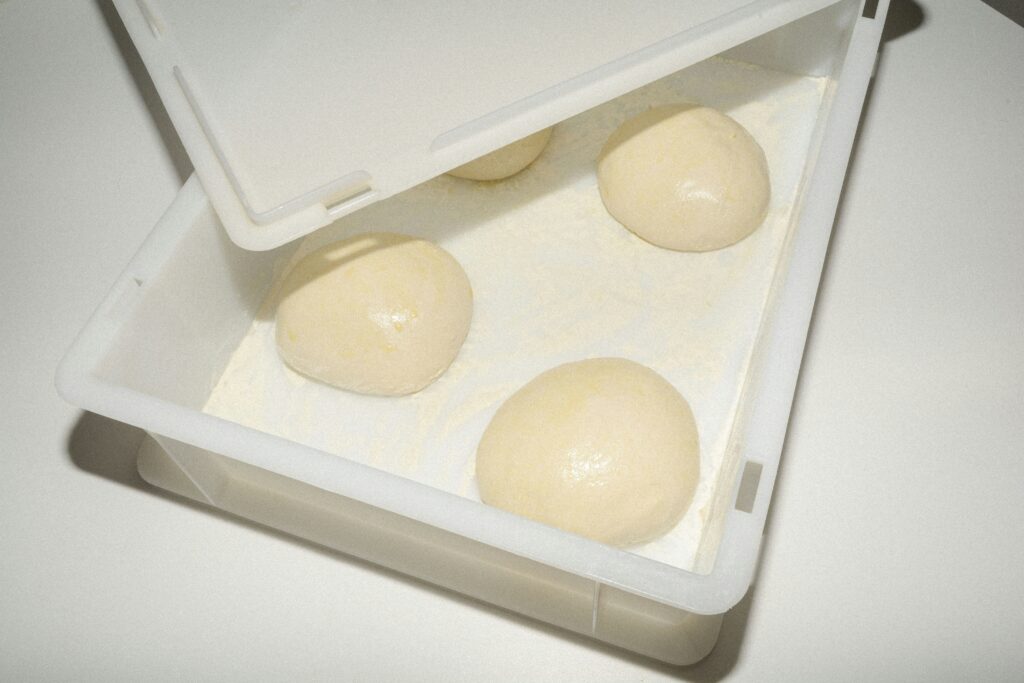A family history linked to the restaurant business, the resourcefulness of a young couple moving to Lombardy, a pizzeria that evokes coastal tradition and passes it on with an eye to the future and innovation.
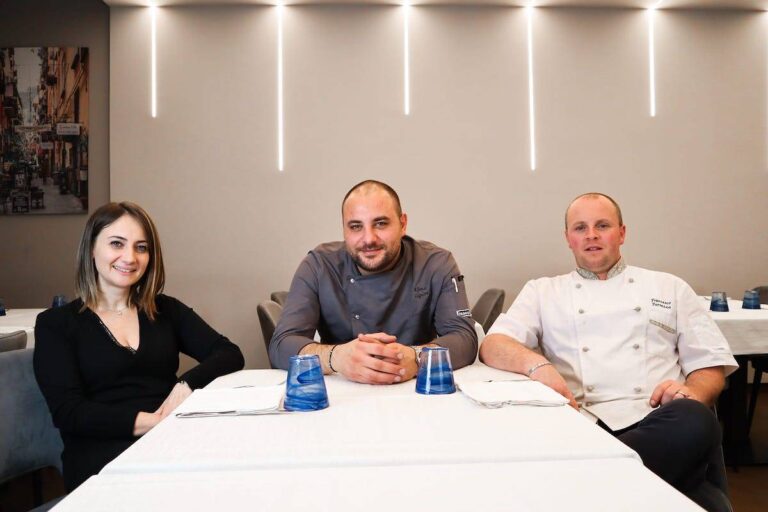
The story of La Fortezza, a restaurant and pizzeria in Bellusco (MB), comes from afar. It arrives with its creator a decade ago from the beautiful Amalfi Coast, fueled by the gastronomic tradition handed down from generation to generation and strengthened by the experience gained at the family business, strongly anchored in the restaurant world.
Francesco Fortezza, hence the name of the restaurant and seeming almost an omen of tenacity and solidity, moved with his wife Antonella to Lombardy’s Brianza region and, three years ago, decided to expand his reach by putting his knowledge of the culinary world into practice by taking over a restaurant in Bellusco.
“The restaurant is very large,” Francis says, “on two levels, with rooms and a veranda that accommodate 50 to 120 covers. When we arrived it had been closed for a few years, it was empty and a bit shabby, and we had to completely renovate it. It is located in an industrial area, far from the town center, and we immediately sensed the potential of the place but also its limitations: those who come to us must have a good reason for coming here; apparently the only advantage would seem to be the ample parking.” Francesco Fortezza understands that the imprint he intends to give to his restaurant must be well delineated, that in order to win over his customer he must offer that added value that is essential to communicate the fame of the place and build loyalty. He proudly explains, “Right away we set the kitchen to the best. This I told myself-I want the best for my restaurant-and we focused on excellent quality and care in preparation. The typical cuisine of the Amalfi Coast originates from the Campanian tradition but is distinguished by elegance. It is a refined cuisine. That’s why we have focused on a refined style, even in the presentation. Knowing the restaurant world well, we immediately set the menu toward high-level choices. Then I realized that in this context pizza could be an excellent alternative. Pizza is experiencing that phenomenon of popularity and increase that the restaurant industry was experiencing 10 to 20 years ago. And I said to myself why not introduce it. But again, for La Fortezza, the best. Said and done.”
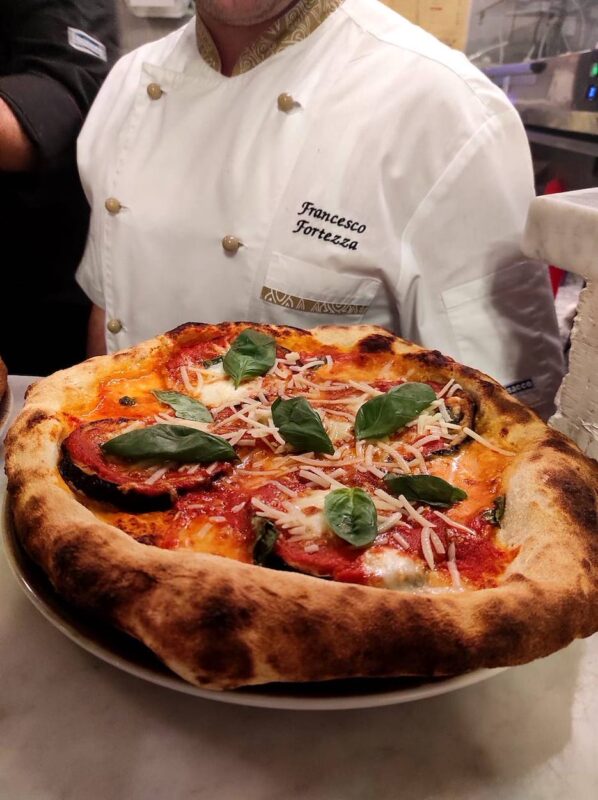
Francis looked around, searched for pizza makers who were up to the task, and then decided to put his hands in the dough himself. “I was already in contact with some master pizza makers in my country, guys and families with a long history, and with their help I studied and tried until I found the right dough for me, just what I wanted: unique and personal, excellent and special. Again, I wanted the best.”
He chooses 5 Stagioni flour, the classic Red, but experiments and makes his own dough so much so that one day the mill technician, the one who prepares the mixtures, tasting his pizza is stunned by the excellent result. Francesco reveals his secret: “I make a dough with 80 percent hydration, it is difficult but I succeeded. My teacher always told me that the flour has to do what I want it to do and not the other way around. Quite a struggle but after trials and experiments I got the result I wanted. My dough is indirect, with biga; I use the 80 kg plunger mixer and on the first day I knead the biga with 100 percent flour and 40 percent water, put in the yeast – a little – and let it rest. The next day I knead again in the machine with 42% water and salt. The result is a contemporary pizza that is halfway between a Neapolitan and a typical coastal pizza, with a half-dish and a crispier texture. The high hydration does not allow the use of a shovel, and baking is applied to the base of the oven at a temperature that does not exceed 360° C versus 400° C or more for the classic Neapolitan. The baking time is also longer, up to two minutes.
With these characteristics we can’t boast the Stg mark, but my pizza can be cut into wedges, and when you take the wedge in your hand, it doesn’t sag and you can bring it closer to your mouth without having to accompany it, because the biscuity texture allows it. It’s a pizza with a unique identity, with its own personality.” Customers who used to come in attracted by the kitchen and its menu now also come for the pizza because they know they won’t find it anywhere else. The toppings are up to par, the tomato sauce is a chef’s recipe made with 4 different types of tomatoes-it’s perfect! In just one year the pizzas triple, from 20 to 80 kg of dough per day. Francesco also makes bread and serves it at the table or sells it to customers. At noon the average is 150 covers, but it is in the evening that success is measured, you have to give more. Today customers also come from neighboring towns, from Lecco, Lodi, Milan: up to 400 pizzas in an evening. The proposal is enriched with menus built to measure for the table, tasting routes, tasty specialties such as fried foods that conquer the most demanding palates because they are dry, crispy, the special single-portion escarole pizzas, a resounding success, the white pizza with carpaccio, the focaccias with mozzarella and provolone cheese: “We try not to be the typical restaurateurs tied to the past but we want to give a modern and specialized vision of cuisine.
We want to intrigue customers and win them over with the originality of our proposals, which are always of a high standard and superior quality. On the Coast they teach us from an early age to relate to people, to work hard and aspire to the best. I continue to do this together with my staff of about 15 people: we would like more,” says Fortezza, “but it is increasingly difficult to find staff, even if there is no shortage of work, even if I make fair contracts and excellent conditions. Of course the hours are heavy but that’s the way the business is, so we hope to find the right balance. We try and the response is good, we are happy.”
